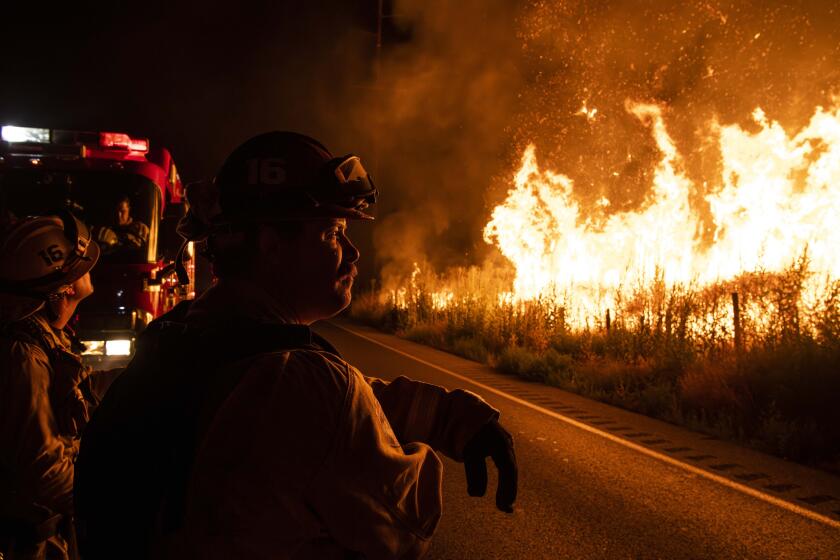In Hot Water : CONTROVERSY SURROUNDS RECYCLING PLANT
- Share via
Ever since it was built in 1984, the waste water treatment plant serving most of the San Fernando Valley has been a source of controversy.
Residents from nearby neighborhoods complain that the Donald C. Tillman Water Reclamation Plant, located in the Sepulveda Basin Recreation Area, has spoiled valuable parkland and emitted noxious odors. About 75 residents attended a public hearing to complain about the odors just last week.
The latest flap involves a portion of a long-term growth plan that says Tillman should expand by 50% by 2010. The Department of Public Works now says that projection is in error and that no expansion is anticipated over the next 16 years. But the department’s assurances have not calmed residents, who have long viewed the facility with suspicion. Department officials, meanwhile, say they are just trying to serve a growing community.
The plant is one of four waste water treatment plants operated by the Los Angeles Bureau of Sanitation. Together they treat waste water produced by 4 million people in a 600-square-mile area. Tillman operates around the clock and employs more than 100 people. It processes about 67 million gallons of waste water a day.
House
A family of four produces an average of 281 gallons of waste water daily.
Street sewer lines
lead to main lines in the west and northeast areas of the Valley that feed into Tillman.
Tillman Plant
Lake Balboa
About half of the treated water is pumped to Lake Balboa, Japanese Garden and a wildlife lake; the rest flows to the L.A. River.
Hyperion Plant
Solid waste piped to Hyperion Treatment Plant in El Segundo; after more processing it is used as fertilizer in Arizona and the Antelope Valley or burned as fuel to run the treatment plant.
Reclamation Process
Typically, 0.05 to 0.1% of waste water is organic and inorganic materials. The Tillman plant removes more than 65 tons of such debris daily.
Raw sewage
Grit tank
1. Grit, or inorganic material, settles and is removed.
Bar screens
2. Water is pumped up 30 feet to a comb-like screen; anything larger than 3/4 inch is caught.
Primary settling tank
3. It takes two hours for screened waste water to flow through tanks; sludge settles and scum floats.
4. Sludge to Hyperion.
Aeration basin
5. Effluent flows to aeration basin, where living microorganisms feed on organic pollutants. Air bubbling up from below mixes the pollutants and microorganisms and supplies oxygen.
Secondary clarifying tank
6. Fattened microorganisms settle and are returned to the aeration basin to start the process again. Excess organisms are pumped to Hyperion.
Coagulation
7. Chemicals added to aid in the formation of particles large enough to be washed through sand filters.
Sand filters
8. Remaining solids removed.
Backwash water to Hyperion
Chlorine tanks
9. Chlorine disinfectant added.
Dechlorination
10. Chlorine removed by sulfur dioxide solution.
Reclaimed water for reuse or discharge to Los Angeles River
Source: Los Angeles Department of Public Works, Donald C. Tillman Water Reclamation Plant; Researched by JULIE SHEER / Los Angeles Times
More to Read
Sign up for Essential California
The most important California stories and recommendations in your inbox every morning.
You may occasionally receive promotional content from the Los Angeles Times.










